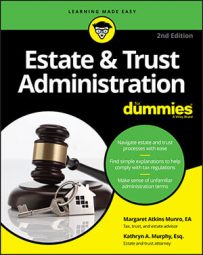To get tax-exempt status for your foundation, file Form 1023, Application for Recognition of Exemption under Section 501(c)(3) of the Internal Revenue Code. Expect that your application will be rejected at least once, but know that this is a situation of “if at first you don’t succeed, keep trying.”
The IRS will give you explicit reasons why it has kicked back your application. Fix up those problematic sections and resend it. Obtaining tax exemption is a key element for your foundation; without it, you may as well not have one.
After you’ve filed your application, you have to file an annual Form 990-PF, Return of Private Foundation. Don’t wait until you’ve received your determination letter before you begin filing annual Form 990-PFs; instead, assume you’ll eventually receive your exemption. Form 990-PF, although not an income tax return, is an excise tax return, and you’ll be required to pay either 1 or 2 percent of your net income as excise tax.
Unlike most other types of trusts, family foundations are allowed to use a fiscal year-end (ending the tax year on the last day of any month, not just December) for tax reporting purposes. If you choose a fiscal year-end for your foundation, Form 990-PF is due 4 1/2months after the end of the fiscal year.
Filling out the Form 990-PF can charitably be called a nightmare. Chances are good that you won’t ever prepare this return on your own, and neither will most professionals. Not to fear — some professional preparers do prepare these returns, but you may have to do some homework to find one.
Don’t just accept a preparer’s word that he or she can do this work; ask to see some evidence. Form 990-PF is open to public inspection, and you’re well within your rights to ask to see one he has prepared.
In these days of easy identity theft, be aware that Form 990-PF is a matter of public record and anyone can ask to see it. In fact, all Form 990-PFs are now available online at Guidestar.org.
Be sure when you’re completing the return that you limit the amount of personal information you provide. You may want to use a business address and phone number, not just for yourself as trustee, but also for the foundation; if you don’t have a business address, renting a post office box makes a great deal of sense.

